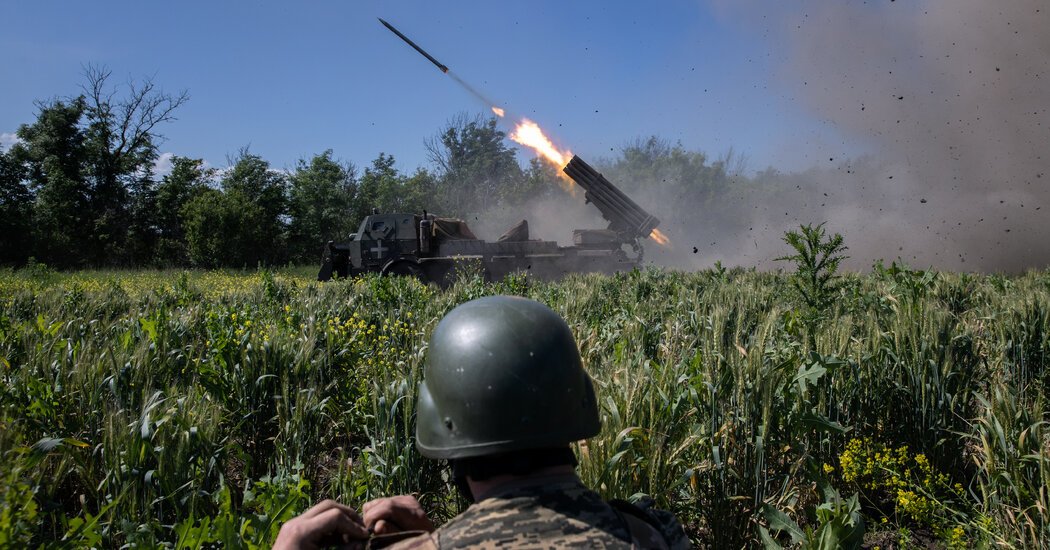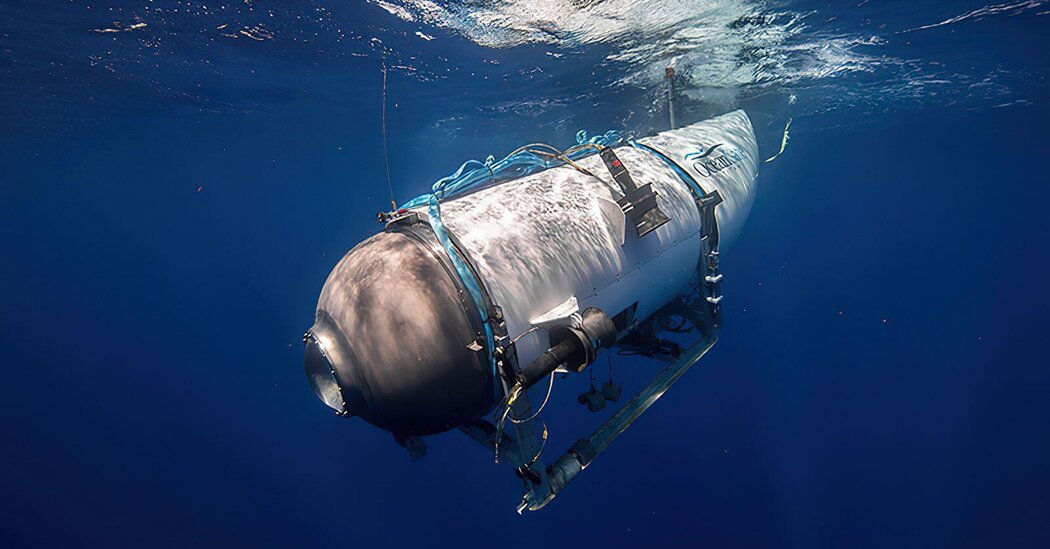Ukrainian forces mounted a major attack in the southern region of Zaporizhzhia on Thursday, taking the offensive against the invading Russians in multiple places in the east and south, but there was no indication of a breakthrough in an operation that carries high stakes for Kyiv and its Western allies.
Three senior U.S. officials, as well as military analysts, said that a long-awaited major Ukrainian counteroffensive appeared to be underway, after months spent mobilizing and training new units, and arming them with advanced Western weapons. A strong indication, they said, was the Ukrainians’ use in combat on Thursday of German Leopard tanks and American Bradley fighting vehicles.
“It appears some of the new brigades Ukraine stood up for this counteroffensive have been committed, which indicates the counteroffensive is underway,” said Rob Lee, a senior fellow with the Foreign Policy Research Institute. “Ukrainian forces have made some tactical gains and sustained losses.”
The United States and other Ukrainian allies trained and equipped the nine brigades that were designed to lead Ukraine’s counteroffensive to recapture Russian-occupied land. Ukraine is widely expected to mount a multipronged assault along a front that arcs for hundreds of miles, focusing on a swath of the Zaporizhzhia and Donetsk regions. Ukraine’s plans target specific areas to try to break through Russian lines, but can adjust to concentrate on those thrusts that prove most successful, U.S. officials said.
Russia and pro-war Russian bloggers claimed that Moscow’s forces had repelled Ukrainian assaults on Thursday. Kyiv said little about the intensified fighting, neither confirming nor denying Russian claims, and Ukrainian officials have said they will not discuss details for reasons of operational secrecy.
The Russian war bloggers, who have become a major source of information from the front lines, said Ukraine’s forces had suffered heavy losses, though such claims could not be confirmed and in the past have often been exaggerated.
Two of the senior U.S. officials, speaking on the condition of anonymity to discuss sensitive military operations, confirmed that advancing Ukrainian troops had suffered casualties in the early fighting but said classified assessments quantifying the losses were still being developed.
Ukraine, as a rule, does not discuss military losses, but the battlefield conditions pose a serious challenge for an attacker. For months, Russian forces have built a network of defenses, and the table-flat terrain, with little cover along much of the southern front, leaves any advancing force of troops or armored vehicles vulnerable to enemy artillery.
In recent days, Russia’s military and pro-war bloggers reported that Ukrainian forces had launched attacks in the eastern Donetsk region, fighting that prompted American officials to say earlier this week that the counteroffensive may have begun. The evidence for that conclusion grew on Thursday, but the possibility remained that the Ukrainian assaults were a prelude to an even larger push.
The Russian Defense Ministry said on Thursday that its forces had thwarted a Ukrainian attack in the Zaporizhzhia region, near the village of Novodarivka.
A Ukrainian deputy defense minister, Hanna Malyar, said a battle was underway in the area of a larger town about 10 miles away in the neighboring Donetsk region, Velyka Novosilka, but it was unclear if she was referring to the same clash. And a map released by the British Defense Ministry identified that general area as the location of an apparent Ukrainian advance.
Sergei K. Shoigu, the Russian defense minister, said that forces of Ukraine’s 47th Mechanized Brigade, including dozens of armored vehicles, had “made an attempt to break through Russia’s defense” in that area, but that Moscow’s air and ground forces had repelled the attack. That brigade is one of the Ukrainian units that have received training and advanced equipment from the United States.
The Russian account, like most claims about what was happening at the front, could not be confirmed independently, but videos verified by The New York Times showed a Ukrainian armored vehicle near Velyka Novosilka hitting a land mine.
Heavy fighting was reported farther west in the Zaporizhzhia region, near the town of Orikhiv, where Ms. Malyar said “the enemy is actively on the defensive.”
Russian bloggers reported that Ukraine unsuccessfully attempted an advance a few miles east of Orikhiv, near the village of Mala Tokmachka, and posted videos and photos showing Leopard tanks and German- and American-made fighting vehicles, claiming that some of them had been destroyed. The Times was able to confirm the locations of the images and that they were made recently, and that some were damaged or destroyed.
More than 120 miles away to the northeast, there was more heavy fighting around the city of Bakhmut, scene of the war’s longest and bloodiest battle. Ms. Malyar told Ukrainian news broadcasters that Bakhmut, where Russians seized the city but Ukrainians have been advancing on its flanks, “remains at the epicenter where we have gone from defense to offensive,” and that “we destroy a lot of enemy manpower” there.
But Russian bloggers said that defenses were holding, aided by sustained strikes by the Russian Air Force.
“After a day of continuous fighting, there’s indirect information about insignificant puncturing of defenses, there are no breakthroughs,” the former Russian paramilitary commander Igor Girkin wrote on the Telegram messaging app on Thursday morning.
Western nations have supplied billions of dollars worth of weapons to give Ukrainian forces the mobility and firepower to go on the offensive, including modern tanks and other armored vehicles. The allies quickly trained nine of the 12 newly formed and equipped brigades expected to take part in the fighting, alongside other Ukrainian units.
But while solid so far, there is no guarantee that Western support will remain so for has been solid so far but is not guaranteed in the long term. The U.S. budget for military assistance, for example, is expected to run out by around September, and some Republicans in Congress have questioned the justification for it.
If Ukraine fails to break through Russia’s mine belts, tank traps and trench lines, the appetite for arming its forces could wane, putting pressure on Kyiv to enter into negotiations with Moscow or freeze the conflict, cementing in place some of Russia’s territorial gains.
The destruction on Tuesday of the Kakhovka dam in southern Ukraine this week, which caused widespread flooding along the Dnipro River, complicates matters for both sides, but Ukrainian officials, including President Volodymyr Zelensky, have said the effect on the battlefield would be minimal. The floods would make a military crossing of the Dnipro, which separates the warring sides in the Kherson region, more difficult, but the Ukrainians say such an attack was not in their plans.
Christiaan Triebert, Christoph Koettl, Ivan Nechepurenko, Marc Santora and Anatoly Kurmanaev contributed reporting.




